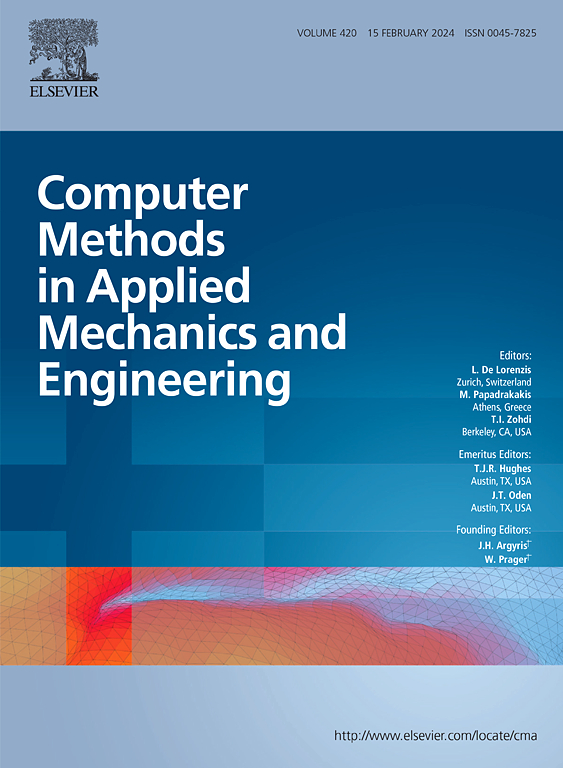EM-based fast uncertainty quantification for bayesian multi-setup operational modal analysis
IF 6.9
1区 工程技术
Q1 ENGINEERING, MULTIDISCIPLINARY
Computer Methods in Applied Mechanics and Engineering
Pub Date : 2025-03-22
DOI:10.1016/j.cma.2025.117942
引用次数: 0
Abstract
The current Bayesian FFT algorithm relies on direct differentiation to obtain the posterior covariance matrix (PCM), which is time-consuming, memory-intensive, and hard to code, especially for the multi-setup operational modal analysis (OMA). Aiming at accelerating the uncertainty quantification in multi-setup OMA, an expectation-maximization (EM)-based algorithm is proposed by reformulating the Hessian matrix of the negative log-likelihood function (NLLF) as a sum of simplified components corresponding to the complete-data NLLF. Matrix calculus is employed to derive these components in a compact manner, resulting in expressions similar to those in the single-setup case. This similarity allows for the reuse of existing Bayesian single-setup OMA codes, simplifying implementation. The singularity caused by mode shape norm constraints is addressed through null space projection, eliminating potential numerical errors from the conventional pseudoinverse operation. A sparse assembly strategy is further adopted, avoiding unnecessary calculations and storage of predominant zero elements in the Hessian matrix. The proposed method is then validated through a comprehensive parametric study and applied to a multi-setup OMA of a high-rise building. Results demonstrate that the proposed method efficiently calculates the PCM within seconds, even for cases with hundreds of parameters. This represents an efficiency improvement of at least one order of magnitude over the state-of-the-art method. Such performance paves the way for a real-time modal identification of large-scale structures, including those with closely-spaced modes.
求助全文
约1分钟内获得全文
求助全文
来源期刊
CiteScore
12.70
自引率
15.30%
发文量
719
审稿时长
44 days
期刊介绍:
Computer Methods in Applied Mechanics and Engineering stands as a cornerstone in the realm of computational science and engineering. With a history spanning over five decades, the journal has been a key platform for disseminating papers on advanced mathematical modeling and numerical solutions. Interdisciplinary in nature, these contributions encompass mechanics, mathematics, computer science, and various scientific disciplines. The journal welcomes a broad range of computational methods addressing the simulation, analysis, and design of complex physical problems, making it a vital resource for researchers in the field.

 求助内容:
求助内容: 应助结果提醒方式:
应助结果提醒方式:


